Jimmy Page gives a rare and revealing interview to Tony Barrell, discussing Led Zeppelin, astrology… and tropical fish
THE SUNDAY TIMES (COVER STORY), 2010
Jimmy Page is telling me about his former life as a choirboy. In the mid-1950s, when he was about 12, he would dress up and sing sweetly at St Barnabas’ Church (see picture below) near his home in Epsom, Surrey. This comes as a bit of a shock – little Jimmy Page, singing his heart out to the Lord – given that a dozen years later he would metamorphose into the ultimate rock’n’roll superstar, seducing the world with his band Led Zeppelin, his raunchy guitar riffs and his ravenous libido.

Led Zeppelin not only produced some of the most exciting music ever played, but they set the standard for classic 1970s rock behaviour. The Herculean foursome of Page, Robert Plant, John Bonham and John Paul Jones worked incredibly hard – touring for months on end, and playing gigs that could run for three or even four hours – but they played hard as well, partying like Dionysus, ingesting a pharmacopoeia of drugs, and giving a Whole Lotta Love to adoring groupies.
Thirty years after the Led Zep adventure ended – when their drummer, John Bonham, died of alcoholic poisoning – they continue to inspire millions. Recently, Led Zeppelin triumphed in a BBC television poll to determine the best-ever rock’n’roll band, beating the Beatles and Queen. On the same show, the musician Mark Ronson, famous for producing Amy Winehouse, confessed that Led Zeppelin had even helped him with his sexual education. “Jimmy Page could get you laid,” he explained, “because everything he wrote and played was drenched in a rhythmic swagger, filthier than sex, coupled with melodic pieces that could break the hearts of the iciest of prom queens. Even my crappy, third-rate (or maybe even lower) renditions of those songs got me to third base with 15-year-old girls in training bras and braces.”
At the age of 12, Page seems to have had a pragmatic motive for pulling on a surplice and wailing ‘The Lord’s My Shepherd’. “In those days it was difficult to access rock’n’roll music,” he remembers now, “because after all the riots happened in the cinemas, when people heard ‘Rock Around the Clock’ in the film Blackboard Jungle, the authorities tried to lock it all down. So you needed to tune into the radio or go to places where you could hear it. It just so happened that in youth clubs, they would play records and you’d get to hear Elvis, Jerry Lee Lewis and Ricky Nelson – but you had to either go to church or be a member of the choir to go to the youth club.”
Page’s eloquence usually lies in his guitar-playing rather than in his conversation
Page, who is granting me an exclusive audience in the offices of his management in west London, is being unusually expansive. One of the most expressive guitarists ever to plug into an amplifier – a fact you can confirm by listening to Led Zeppelin songs as diverse as ‘Stairway to Heaven’, ‘Kashmir’, and ‘Over the Hills and Far Away’ – his eloquence usually lies in his playing rather than in his conversation. In fact, he has long been notorious for his reticence and secrecy in interviews. Questions about his personal life have been greeted with silences and refusals to answer, and at times he has made JD Salinger and the elderly Howard Hughes seem like gossipy chatterboxes. But today he is excited, because he is unveiling a curious new album.
The album is called Jimmy Page, by Jimmy Page, so we know it’s not a collection of songs by an impossibly reunited Led Zeppelin. In fact, it’s not even a CD or vinyl record: this is a photographic album, charting his musical life in pictures. It is a luxurious tome produced by Genesis Publications – the British publishers renowned for fusing lavish, limited-edition bookbinding with rock’n’roll – and it features 650 photographs, many of them rarely, if ever, published before.
His famous heavyweight twin-necked Gibson EDS-1275 guitar became almost another member of the band
Lucky fans of Led Zeppelin who get hold of this book – which is a signed limited edition of 2,500, almost fetishistically bound in leather and Perspex, in a silk-and-leather slipcase – will plunge straight into its heart, where they will find shot after shot of Jimmy Page, Robert Plant, John Bonham and John Paul Jones recording, relaxing, rehearsing and playing to packed houses, arenas and stadiums across the world. We see Page’s stage outfits evolving from mix-and-match casual wear to elaborate stage suits embroidered with dragons, poppies and esoteric symbols. And we see Page’s famous heavyweight twin-necked Gibson EDS-1275 guitar becoming almost another member of the band, after the guitarist commissioned its manufacture because of the live demands of a certain Page-Plant song. “ ‘Stairway to Heaven’ dictated that guitar – the fact that it had a number of guitar parts on it, from acoustic to the electric 12-string,” he tells me.
This book is effectively his autobiography – though, appropriately for such a guarded man, it’s short on words. He points out that many books have been written about him and Led Zeppelin, none of them authorised. And in the absence of volunteered information, writers have sometimes fallen back on rumour and exaggeration. He was once so enraged by the lurid stories in one book, he says, that he threw it out of the window. He was living then in an old watermill, the Mill House in Clewer, Berkshire, and he says it went straight into the water.
“I’ve been approached on quite a number of occasions to do an autobiography, which I’ve never really wanted to do, because to sell a book, you can bet your life that it’s stoked up in a sensational furnace,” he says. “But, you know, I’ve had a substantial career, and I thought it would be interesting to do a photographic autobiography. I wanted to do a book which would show the career, rather than concentrate on lots of hearsay and people’s colourful stories.”
He is right about that “substantial career” – leaving Led Zeppelin aside, he has collaborated with many other big names and played on some of the greatest pop records ever made. But the “colourful stories” he mentions have swirled around the reputation of Page and Led Zeppelin for four decades, and they’re not going to go away. They concern taboo subjects like witchcraft and sadomasochistic sex, and over the course of the next two hours they will also need to be discussed.
The choirmaster remembered that I used to take my guitar to choir practice, and ask if I could tune it up to the organ
It’s hard to believe that the Lord of the Riffs is 66 now. A silver ponytail now replaces the long dark tresses of his 1970s heyday, and he is a grandfather – his daughter Scarlet having had a daughter, Martha, three years ago. He was born on January 9, 1944, in Heston, Middlesex, to James and Patricia Page – hence his full name, James Patrick Page. Dad was an industrial personnel manager and Mum was a doctor’s secretary. The Pages moved shortly afterwards to nearby Feltham, and then upped sticks again to escape the growing noise pollution of nearby Heathrow airport, ending up in Epsom.
Just as the heroic costume of Spider-Man conceals puny Peter Parker, there seems to be a geek, a nerdy loner, lurking beneath the surface of this guitar god. An only child, Page enjoyed solitary pursuits: he read books, studied postage stamps and, crucially, started devoting long stretches of time to mastering the guitar, having been excited by rock’n’roll tunes like ‘Baby Let’s Play House’, by Elvis Presley. “The choirmaster at St Barnabas’ remembered that I used to take my guitar to choir practice,” he says, “and ask if I could tune it up to the organ. I was about 12 years old, and this guitar was already like another limb.” The instrument wasn’t a monstrous 18-stringed Gibson double-neck, or even a sunburst Les Paul, but an acoustic that had apparently been discarded by the previous owners of the Page family’s Epsom home.
Page was soon playing with young friends in a skiffle group, and his indulgent parents allowed them to rehearse in the house. But when the group appeared on a BBC young-talent show in the late 1950s, the adolescent Page told the broadcaster Huw Wheldon that he wanted to work in the rather solitary field of “biological research” when he grew up.
In a sense, he eventually achieved that ambition, as a bevy of beautiful women could attest. But in the 1960s, after his guitar skills got him noticed, Page began serving what he now calls his “apprenticeship” in British recording studios, playing on records by a who’s who of ’60s artists, including the Rolling Stones, the Who, the Kinks, Tom Jones, Dusty Springfield, Lulu, Petula Clark and Benny Hill. He says he would play about 15 sessions a week, and he wouldn’t know who he was working with until he arrived at the studio.
One day in 1964 he walked into EMI studios in Abbey Road and found he was making incidental music for the Beatles’ first film, A Hard Day’s Night. “I turned up and, lo and behold, there was George Martin,” he recalls now, “and I recognised the music and realised what it was.” He ended up contributing background guitar to ‘Ringo’s Theme’, the instrumental of the song ‘This Boy’ that accompanies a morose Ringo Starr as he wanders off by the River Thames. Page’s session experience wasn’t limited to playing guitar. “I loved the blues so much that I learned to play harmonica – pretty badly, but I did play on a few sessions; I did one for Cliff Richard and one for Billy Fury.”
He once lovingly tended his own tank of tropical fish, though he says that touring and having an aquarium don’t mix
Page joined his friend Jeff Beck in the Yardbirds in 1966, and was soon able to afford his first house. It was a former boathouse in Pangbourne, which came complete with its own private boat, “a slipper stern”. It was here that Page’s loner tendencies came out again. “I lived at that house for a substantial period on my own,” he tells me. “And I really enjoyed that bachelor existence – working and creating music, and going out on my boat at night on my own; switching off the engine and just coasting in the twilight. I liked all that.” At another point, he lovingly tended his own tank of tropical fish – though he says now that “going on the road and having an aquarium don’t mix”.
After the Yardbirds folded and Page cast around for musicians to play some powerful new material he was writing, he found Robert Plant and John Bonham, and the bass player John Paul Jones came on board. Page occasionally lapses into the third person when he talks about Led Zeppelin now, as if reading from a book of myths and legends: “There were four remarkable musicians here. They could play in a band like no others did,” he declares. When you played those ridiculously long gigs, were you just showing off? “No,” replies Page. “By the time of the third album, the set was growing and we simply didn’t want to drop any of our numbers. We just loved playing them. By the time a song got to the stage, it had started to take on another character altogether as we expanded on it and augmented it, through soloing and new sections. So the sets started getting longer and longer. But nobody complained about that!” he laughs.
He says that playing in the band was “exciting and exhilarating”, but he might add “exhausting” as well. The book meticulously itemises their gigs, which number about 150 in the year 1969 alone. “I felt worn out just looking at the date sheet for 1969,” chuckles Page. Led Zep were “on fire, totally on fire, right to the very end”, says Page. “There’s no doubt about the fact that there was a musical… let’s call it ESP, a synergy. There were so many times when the rest of the band came in together, and you’re thinking, ‘They haven’t even heard it yet, but they’re right on it.’”
As well as gathering new songs, Page was becoming a serious art collector. Even before Led Zeppelin started selling millions of albums (they have now sold somewhere between 200m and 300m), he was regularly buying antiques and pictures, notably favouring the work of the Pre-Raphaelites. In 1978 he acquired a magnificent 24ft-long tapestry by Edward Burne-Jones, entitled The Quest for the Holy Grail: The Achievement. A photograph exists of Page playing snooker in front of the tapestry, which shows Sir Galahad and a trio of angels. He tells me that that Romantic and Pre-Raphaelite aesthetics were also influencing the dandyish clothes he was wearing.
Page likes to top off his outfit with a stylish scarf, and his collection of wispy squares of fabric must rival the shoe hoard of Imelda Marcos
Here is a description of Page from the mid-1970s, written by his erstwhile American lover Bebe Buell: “Jimmy was wearing a pair of dainty black boots, crushed blue velvet pants, a beautifully ruffled Edwardian shirt, and a velvet jacket worthy of Beau Brummell. His pale, handsome face was framed by exquisite black ringlets. He looked like Sir Lancelot.” To this day, Page likes to top off his outfit with a stylish scarf, and his collection of wispy squares of fabric must rival the shoe hoard of Imelda Marcos.
Unusual period properties are another Page passion, and in 1972 he acquired one of his greatest prizes when he bought the Tower House in Kensington from the actor Richard Harris for a reported £350,000. This is the extravagant neo-gothic home that the architect William Burges built for himself in the 1870s. It looks like the kind of place Shrek would live in, with steeply pitched roofs, stained-glass windows and a fairy-tale pointy-topped turret; the interiors are packed with exquisite fantasy decoration, including a chimneypiece resembling a gigantic medieval castle in the library. Page still owns the Tower House, though more recently he bought a grand country house designed by Edwin Lutyens in a small Berkshire village. With his overall worth put at £75m by The Sunday Times Rich List in 2009, he could afford the upkeep of these national treasures.
In early interviews, Page mentioned his interest in the late magician and libertine Aleister Crowley – whom he once called “a misunderstood genius of the 20th century”. In the early 1970s he bought Boleskine House, Crowley’s spooky old pink-stuccoed mansion by Loch Ness, where the old wizard is said to have tried to summon angels and called up demons by mistake. Page also acquired a London bookshop called the Equinox, which traded in occult books. In case people didn’t get the message, inscribed in the run-out grooves of Led Zeppelin’s third LP in 1970 was the Crowley-inspired line “Do what thou wilt”. Religious groups came to the conclusion that he worshipped Satan, and people started playing Led Zeppelin records backwards to find diabolical messages. “I do not worship the Devil,” he told one journalist, “but magic does intrigue me – magic of all kinds,” leading some to conclude that he was a big Tommy Cooper fan as well. He had read a Crowley book, Magick in Theory and Practice, when he was about 11, but “it wasn’t for some years that I understood what it was all about”.
Page discussed magic when he was interviewed by William S Burroughs, author of The Naked Lunch, for the American magazine Crawdaddy in 1975. “Jimmy said that Crowley has been maligned as a black magician,” wrote Burroughs, “whereas magic is neither white nor black, good nor bad – it is simply alive with what it is: the real thing, what people really feel and want and are.”
Page once elaborated that he had been motivated by “Crowley’s system of self-liberation”, which teaches that “when you’ve discovered your true will, you should just forge ahead like a steam train. If you put all of your energies into it, there’s no doubt you’ll succeed because that’s your true will… You know when you realise what it is that you’re supposed to be here for”. When I ask about his magical interests, Page gives me a long-winded refusal: “To be honest with you, I don’t really want to go into it. It’s not the time or place to discuss my interest in other areas, because really I prefer to be weighed up purely by the communicative aspect of the music.”
Cagey Page still refuses to discuss the meaning of the personal “Zoso” symbol he chose for himself on the cover of Led Zeppelin IV, though perceptive researchers have previously tracked it down in a 16th-century book on magic and alchemy. The mysterious rune may allude to Saturn, his ruling planet, and it may be a Rosebud-style reference to “Grazioso”, which was the name of one of Page’s earliest electric guitars. Robert Plant once quipped that it was code for “frying tonight”. Although the symbol is emblazoned on his new book, he isn’t saying.
The book reminds us that Page used to wear astrological symbols on stage – Capricorn, his sun sign; Scorpio, his ascendant, or rising sign; and Cancer, the sign that the moon was in when he was born on January 9, 1944. How did the rest of Led Zeppelin fit in the grand heavenly scheme of things? “Oh, it was quite interesting astrologically. Because you had Robert, a Leo, as a front man, which is perfect.” Yes, he even looked like a lion, didn’t he? “Yeah. And Mick Jagger’s a Leo as well. And you had two Capricorns – John Paul Jones and I – and then you had John Bonham, which is the twins, Gemini. Astrologically, I could see there was a sort of power, if you like, there. If you think about it, it’s interesting.”
Page becomes very defensive indeed when I tackle the subject of flagellation
His message to non-believers is that one can’t simply dismiss the “scholarly work that’s been done for thousands of years” by dedicated stargazers. There’s no doubt that he takes this stuff seriously: Bebe Buell once said that he asked to work out her astrological chart; then, after she handed over her birth details, “he stopped calling me abruptly”. If we indulge his mystical beliefs for a moment, it’s curious that there is a consensus among astrologers about people with Scorpio rising: they use words like “private”, “secretive”, “mystical” and “defensive”.
He becomes very defensive indeed when I tackle the subject of flagellation. The former American supergroupie Pamela Des Barres wrote that in 1969, during a passionate fling with the guitarist when Led Zeppelin were on the road in the US, “I saw Jimmy’s whips curled up in his suitcase like they were taking a nap and pretended I didn’t… He came up behind me and put his hands gently around my throat and said, ‘Don’t worry, Miss P., I’ll never use those on you, I’ll never hurt you like that.’” She also remarked that she was “amazed at his sadistic tendencies; they’re such a part of him that I doubt if he’ll ever stop”.
Did he really have whips in his suitcase? He broods briefly, then takes a humorous tack. “Have you never had any whips in your suitcase?” he asks, and suddenly wheezes with laughter. I suggest that he may have simply had a brief flirtation with S&M, and he replies: “I’m sure some of your readers might have flirted with S&M. Apart from that, there’s no comment.”
Then, suddenly, as if he can’t help himself, he makes the extraordinary statement: “I have a voracious appetite for all things, worldly and unworldly.” From the uneasy silent stare that follows, I infer that this is his final word on the subject.
Page has fathered a total of four children with three different women. Scarlet Page, now a 39-year-old photographer, is the daughter of the French model Charlotte Martin, whom Jimmy met in 1970. James Page Jr, 22, “who is just finishing university and wants to be a documentary maker”, is the son of the American model Patricia Ecker, whom Jimmy met in the 1980s. And Zofia-Jade and Ashen Josan are respectively the young daughter and son of Jimena Gomez-Paratcha, who was born to Argentine parents in the US, and did charity work with Page in Brazil after they met in the 1990s. Page reveals that he is no longer with Jimena; he is single again. “But they’re all really friendly – not just the children, but all the mothers too. So I feel a very fortunate man, under the circumstances.”
Before Page has to leave, I have to ask the inevitable question: will we ever see Led Zeppelin play again? “Never say never,” he shrugs. He tells me that after their one-off “reunion” show at the O2 in 2007 – at which the late drummer John Bonham was replaced by his son, Jason – Page did rehearse and work on new material with John Paul Jones and Jason Bonham with a view to going on tour. Robert Plant was unavailable, duetting with Alison Krauss, so they seriously considered finding a new singer. Page now says that the project foundered, from his viewpoint, because of early “pressure to bring in a vocalist”, when he would have preferred to develop the music further before they did that. “The music always has to come first,” he says.
We shake hands, and he scolds me quaintly for asking some of those more uncomfortable questions. “You’re cheeky, Tony, you are,” he says. And with that, the greatest living guitar hero is off – perhaps to compose some new riffs, cast some spells, or tend to his fish tank. We may never know. ♦
© 2014 Tony Barrell
Tony Barrell is the author of several acclaimed books on music, including Rock’n’Roll London and The Beatles on the Roof.




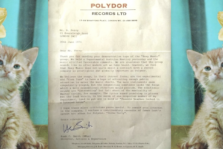
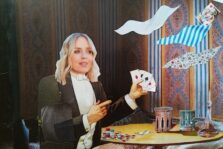
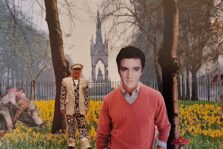
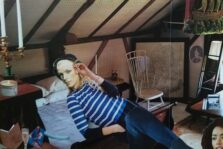
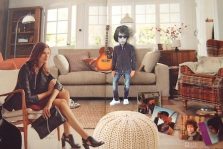

Oh my goodness! Impressive article, dude! Thank
you so much.
I LOVED this interview. Jimmy Page! You’ve taught this Led Zep superfan quite a few things he didn’t know. Awesome!!!!!
You write so well and so flawlessly. I love your grammar and orthography. Get in touch!
Pingback: 'A Hard Day's Night' … with Jimmy Page?
Pingback: A HARD DAY'S NIGHT… WITH JIMMY PAGE? WHO WOULD HAVE THOUGHT? -
Pingback: Hear Jimmy Page Rock Out on The Beatles' 'A Hard Day's Night' Score - Guitar Life Rocks
Pingback: Hear Jimmy Page Rock Out on The Beatles’ ‘A Hard Day’s Night’ Film Score « Guitar Aficionado
ES IMPORTANTE SEÑALAR QUE PAGE FUE EL GUITARRISTA RITMICO EN LA CANCIÓN DIAMONDS, INTERPRETADA POR LOS EX SHADOWS JET HARROIS AND TONY MEEHAN EN 1963, SIENDO Nª 01 EN LOS RANKINGS INGLESES POR 03 SEMANAS.
ADEMAS PAGE, TOCÓ HARMÓNICA EN LA INTRO DE LA CANCION TIMEDRAGS BY INTERPRETADA POR CLIFF RICHARD Y LOS SHADOWS EN 1966.
Just a note to let you know I was here. I was stumbling around the net and Here I am! Enjoyed your site.
Happy new year – all the best!
Steve Zuwala
http://www.SteveZuwala.com
Country Music Artist
Nashville TN